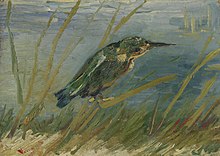
Vincent Willem van Gogh was a Dutch Post-Impressionist painter who posthumously became one of the most famous and influential figures in Western art history. In a decade, he created about 2,100 artworks, including around 860 oil paintings, most of which date from the last two years of his life. They include landscapes, still lifes, portraits, and self-portraits, and are characterised by bold colours and dramatic, impulsive and expressive brushwork that contributed to the foundations of modern art. He was not commercially successful and, struggling with severe depression and poverty, committed suicide at the age of 37.
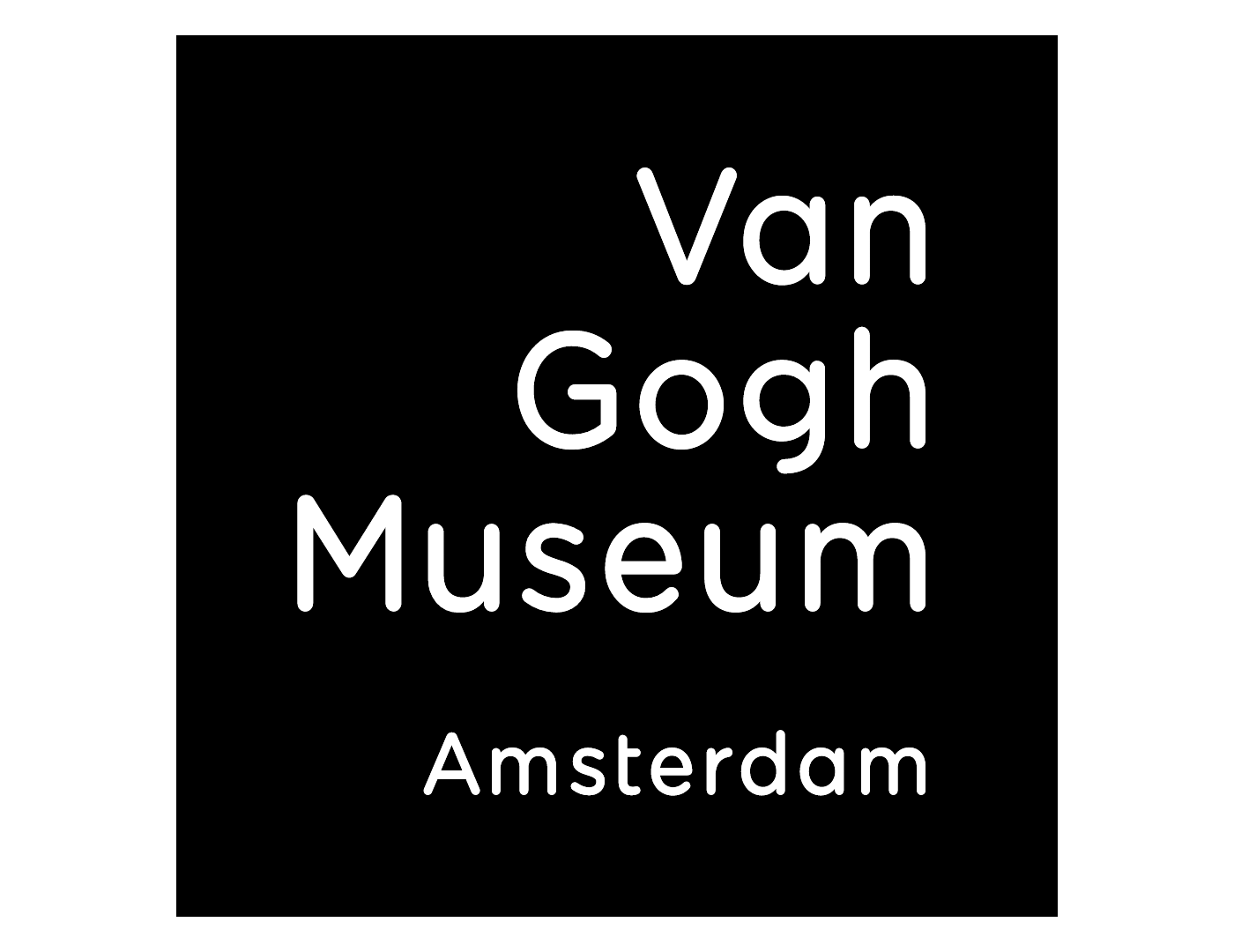
The Van Gogh Museum is a Dutch art museum dedicated to the works of Vincent van Gogh and his contemporaries in the Museum Square in Amsterdam South, close to the Stedelijk Museum, the Rijksmuseum, and the Concertgebouw. The museum opened on 2 June 1973, and its buildings were designed by Gerrit Rietveld and Kisho Kurokawa.

Irises is one of several paintings of irises by the Dutch artist Vincent van Gogh, and one of a series of paintings he made at the Saint Paul-de-Mausole asylum in Saint-Rémy-de-Provence, France, in the last year before his death in 1890.
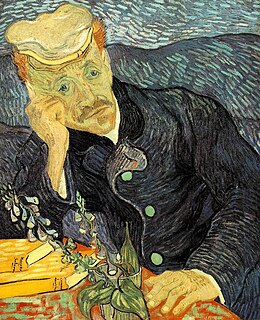
Portrait of Dr. Gachet is one of the most revered paintings by the Dutch artist Vincent van Gogh. It depicts Dr. Paul Gachet, a homeopathic doctor and artist with whom van Gogh resided following a spell in an asylum at Saint-Rémy-de-Provence. Gachet took care of Van Gogh during the final months of his life. There are two authenticated versions of the portrait, both painted in June 1890 at Auvers-sur-Oise. Both show Gachet sitting at a table and leaning his head on his right arm, but they are easily differentiated in color and style. There is also an etching.

The Starry Night is an oil-on-canvas painting by the Dutch Post-Impressionist painter Vincent van Gogh. Painted in June 1889, it depicts the view from the east-facing window of his asylum room at Saint-Rémy-de-Provence, just before sunrise, with the addition of an imaginary village. It has been in the permanent collection of the Museum of Modern Art in New York City since 1941, acquired through the Lillie P. Bliss Bequest. Widely regarded as Van Gogh's magnum opus, The Starry Night is one of the most recognizable paintings in Western art.

Café Terrace at Night is an 1888 oil painting by the Dutch artist Vincent van Gogh. It is also known as The Cafe Terrace on the Place du Forum, and, when first exhibited in 1891, was entitled Coffeehouse, in the evening.

Les Alyscamps is a pair of paintings ("pendants") by Dutch painter Vincent van Gogh. Painted in 1888 in Arles, France, it depicts autumnal scenes in the Alyscamps, an ancient Roman necropolis in Arles which is lined with poplars and stone sarcophagi.

Anthonij "Anton" Rudolf Mauve was a Dutch realist painter who was a leading member of the Hague School. He signed his paintings 'A. Mauve' or with a monogrammed 'A.M.'. A master colorist, he was a very significant early influence on his cousin-in-law Vincent van Gogh.
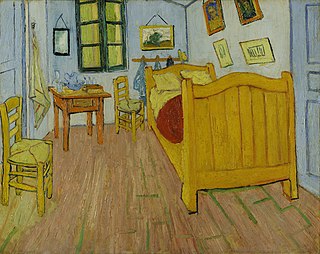
Bedroom in Arles is the title given to each of three similar paintings by 19th-century Dutch Post-Impressionist painter Vincent van Gogh.

Congregation Leaving the Reformed Church at Nuenen is an early painting by Vincent van Gogh, made in early 1884 and modified in late 1885. It is displayed at the Van Gogh Museum in Amsterdam.

Vase with Poppies is an 1886 oil painting created in Paris, France by Post-Impressionist Dutch artist Vincent van Gogh.

Girl in White was painted by Vincent van Gogh in 1890 in Auvers-sur-Oise, France, during the last months of his life. Girl in White has been part of the Chester Dale Collection in the National Gallery of Art, Washington D.C. since 1963.

The early works of Vincent van Gogh comprise a group of paintings and drawings that Vincent van Gogh made when he was 27 and 28, in 1881 and 1882, his first two years of serious artistic exploration. Over the course of the two-year period Van Gogh lived in several places. He left Brussels, where he had studied for about a year in 1881, to return to his parents’ home in Etten, where he made studies of some of the residents of the town. In January 1882 Van Gogh went to The Hague where he studied with his cousin-in-law Anton Mauve and set up a studio, funded by Mauve. During the ten years of Van Gogh's artistic career from 1881 to 1890 Vincent's brother Theo would be a continuing source of inspiration and financial support; his first financial support began in 1880 funding Vincent while he lived in Brussels.
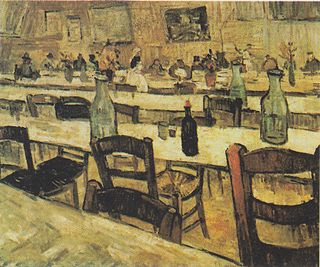
Interior of a Restaurant in Arles is a colored oil painting by Dutch artist Vincent van Gogh on an industrially primed canvas of size 25 (Toile de 25 figure) in Arles, France, late August, 1888.

Boats du Rhône is a series of two sketches and three oil paintings, listed below, created by the Dutch artist Vincent van Gogh while living in Arles, France, during August, 1888.
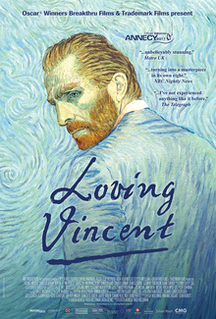
Loving Vincent is a 2017 experimental adult animated biographical drama film about the life of the painter Vincent van Gogh, and, in particular, about the circumstances of his death. It is the first fully painted animated feature film. The film, written and directed by Dorota Kobiela and Hugh Welchman, is a Polish-UK co-production, funded by the Polish Film Institute, and partially through a Kickstarter campaign.

Imperial Fritillaries in a Copper Vase is an oil painting on canvas created by the post-impressionist painter Vincent van Gogh in Paris, 1887. The painting is now part of the collection of the Musée d'Orsay in Paris, France. This work was made at a time of the life of Van Gogh when he first encountered influences from Impressionists and became aware of light and color, implementing it in his paintings. This painting presages some of his most famous subsequent works, and stands out from other still lifes because of the implementation of mixed techniques and complementary colors.

Cypresses is a late 19th-century painting by Dutch artist Vincent van Gogh painted around June 1889. Done in oil on canvas, the painting depicts a pair of cypress trees in the French countryside. The work is currently on display in the Metropolitan Museum of Art.

The Siesta is an oil on canvas painting by Vincent van Gogh painted between December 1889 and January 1890 while he was interned in a mental asylum in the French town of Saint-Rémy-de-Provence. It is part of the permanent collection of the Musée d'Orsay, in Paris.

Wheatfield Under Thunderclouds is an 1890 oil painting by Vincent van Gogh. The painting measures 50.4 cm × 101.3 cm. It depicts a relatively flat and featureless landscape with fields of green wheat, under a foreboding dark blue sky with a few heavy white clouds. The horizon divides the work almost into two, with shades of green and yellow below and shades of blue and white above. Since 1973 it has been on permanent loan to the Van Gogh Museum in Amsterdam.
